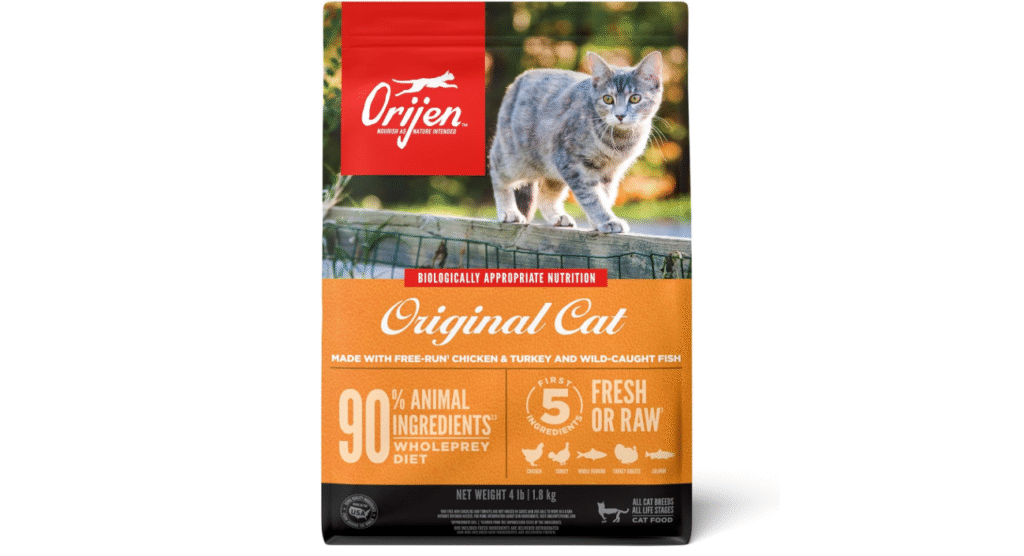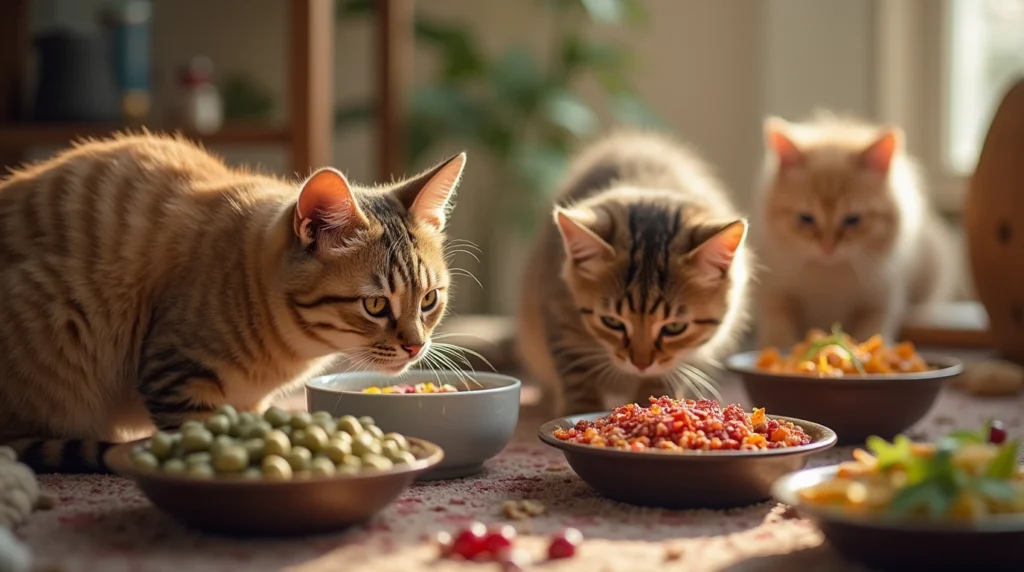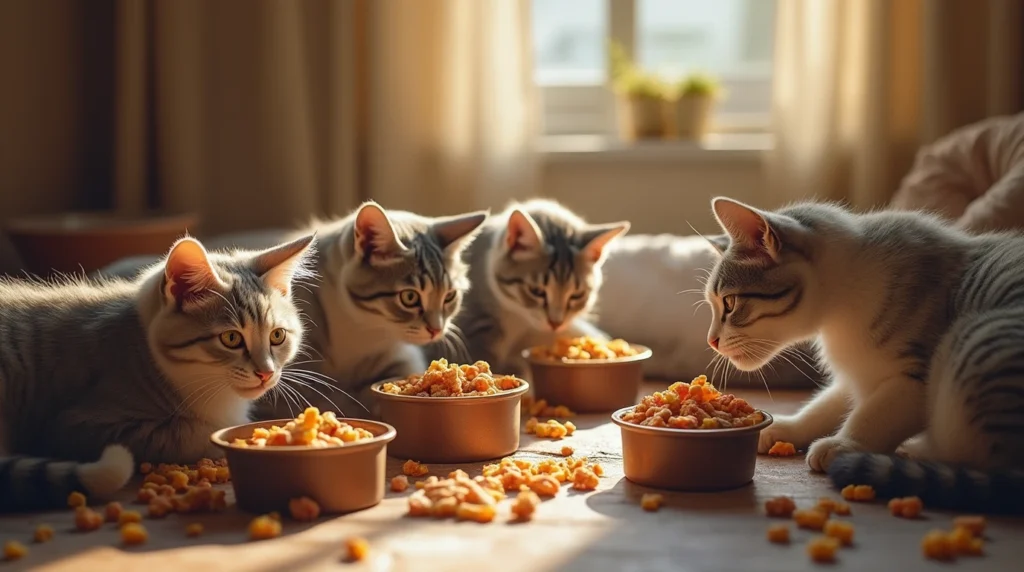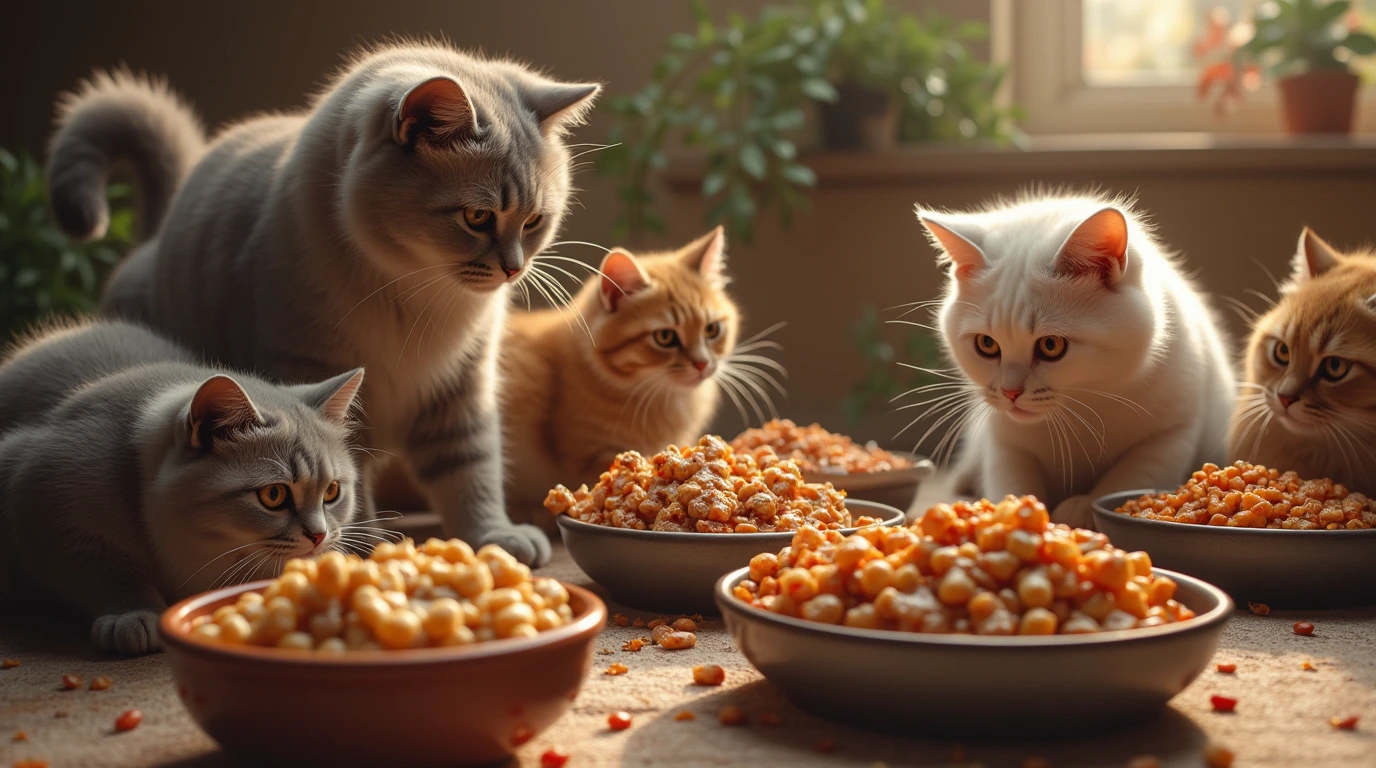Let’s be honest — when you’re staring at a shelf lined with cat food options that all claim to be “premium,” it’s overwhelming. And if you’re here, chances are you’ve already heard whispers — or maybe loud endorsements — about Orijen cat food. The name carries weight, often tossed around in pet circles as one of the cleanest, most biologically aligned foods for cats. But with rising prices and corporate shakeups (yes, Mars Petcare owns them now), you’re probably wondering: Is Orijen still the nutritional gold standard, or has the formula fizzled out under new hands?
That’s what this article is here to unpack.
We’re diving deep into the Orijen cat food review for 2025 — not just skimming labels and repeating marketing fluff. From firsthand user feedback and nutritional breakdowns to subtle shifts in ingredient sourcing post-acquisition, you’ll get the full picture. Whether you’re raising a finicky feline or a robust carnivore who devours everything, this review aims to answer one core question: Should Orijen be in your cat’s bowl today?
Because, let’s face it — you’re not just feeding a cat. You’re nourishing a tiny, fur-covered predator who deserves food as complex and refined as their instincts. So let’s dig into the meat of it — figuratively (and literally).

Meowrealm.com
Table of Contents
Quick Overview: Orijen Cat Food at a Glance
Sometimes, you just want the basics before diving into the details — so here’s the skinny on Orijen cat food if you’re short on time but high on curiosity.
- Product Name: Orijen Cat Food
- Type: High-protein dry and freeze-dried cat food (also offers treats)
- Brand: Originally Champion Petfoods, now owned by Mars Petcare
- Primary Use: Complete daily nutrition for cats of all life stages
- Target Audience: Pet parents seeking biologically appropriate, grain-free, high-meat cat diets
- Formulas Available: Original, Six Fish, Tundra, Regional Red, Kitten, Guardian 8 (senior cats)
- Average Price: Premium range — typically $5.50–$7.00/lb depending on formula and size
- Where to Buy: Amazon, Chewy, Local specialty pet stores
Why People Choose It:
- Up to 90% animal ingredients from fresh or raw sources
- No corn, wheat, soy, or artificial preservatives
- Mimics a carnivorous diet cats might follow in the wild
What’s New in 2025:
- Slight formula tweaks reported post-Mars acquisition
- Growing chatter in online communities about digestibility issues in some cats
- More availability internationally, though stock-outs are still a thing
Is Orijen Right for My Cat?
If your cat thrives on protein-rich diets, tolerates poultry or fish well, and you’re okay paying for premium quality — Orijen could be a game-changer. But if your cat has digestive sensitivities, or if budget is a concern, you might want to keep reading before clicking “Buy Now.”
What Is Orijen Cat Food?
Orijen isn’t just another fancy label in the pet aisle — it’s a brand built on a bold promise: feed your cat the way nature intended. “Biologically Appropriate” is more than a buzzword here; it’s a philosophy rooted in mimicking the natural prey diet of wild felines. Think muscle meat, organs, cartilage, and bone — not cornmeal and mystery by-products.
From Alberta to the World
Founded by Champion Petfoods in Alberta, Canada, Orijen quickly earned its place among top-tier pet food brands. What set it apart? Uncompromising sourcing standards and in-house kitchens — no outsourcing, no ingredient guesswork. The company touted transparency long before it was trendy, with detailed sourcing maps and fresh regional ingredients proudly displayed on every bag.
But here’s where things shift.
In 2023, Mars Petcare acquired Champion Petfoods, raising eyebrows in pet circles. Mars — the corporate powerhouse behind Pedigree and Iams — didn’t exactly scream “artisan craftsmanship.” Suddenly, long-time Orijen fans were nervous: Would the quality slip? Would the formulas stay the same? That uncertainty still lingers, especially among pet parents who noticed subtle changes in smell, texture, or how their cat responded to the food.
What Sets It Apart
At its core, Orijen still leans heavily into:
- High meat inclusion (up to 90%, depending on the recipe)
- WholePrey™ ratios – mimicking whole-animal nutrition
- Fresh or raw ingredients – delivered refrigerated or flash-frozen
- No grains, gluten, or synthetic additives commonly found in cheaper brands
If your cat had a say, they’d probably go for the formula that smells like actual prey. (Let’s be real, most cats couldn’t care less about your budget.)
Has Orijen Changed Since Mars Took Over?
Short answer: Yes — but subtly.
While the official word is that formulas remain untouched, many long-time users on Reddit and cat owner forums have noted shifts in kibble shape, moisture, and even digestive response in their pets. Some say it’s psychological — others swear their cat’s gut knows the truth.
Key Features & Benefits of Orijen Cat Food
If you’re standing in the pet food aisle or doom-scrolling Chewy reviews at midnight, trying to decode ingredient lists like they’re ancient scrolls — stop. Let’s make this simple. Orijen isn’t just a label with lofty promises; it delivers on some serious nutritional fronts. But what exactly makes it worth the price tag (and the hype)?
Here’s where Orijen flexes hardest:
1. WholePrey™ Philosophy — Real Meat, Real Ratios
Cats are obligate carnivores — they need meat like we need air. Orijen takes this seriously, crafting its recipes around the WholePrey™ model. That means not just muscle meat, but also organs, cartilage, and bone — mirroring a wild feline’s natural prey. The idea? Deliver a spectrum of nutrients without over-relying on synthetic additives.
- Muscle meat for protein
- Liver for vitamins A, D, and B12
- Bone for calcium and phosphorus
- Cartilage for natural glucosamine
This isn’t just clever branding. It’s a nutritional blueprint that speaks cat.
2. Up to 90% Animal Ingredients
Unlike other brands that top-load the ingredients with grains or legumes, Orijen leads with animal protein — and lots of it. The first five ingredients are always fresh or raw meat, fish, or poultry.
Common proteins in their blends:
- Free-run chicken & turkey
- Wild-caught fish (mackerel, herring, flounder)
- Ranch-raised beef, lamb, and boar
Translation: your cat gets dense, biologically appropriate fuel — not filler.
3. Grain-Free (But Not Just for the Buzzword)
While “grain-free” has become the trendy checkbox in pet food, Orijen actually does it right. Instead of subbing in cheap starches like potato or pea protein, they include low-glycemic, whole-food carbs like lentils, pumpkin, and squash — just enough to support digestion, not derail it.
4. Freeze-Dried Coating = Smell & Taste Explosion
Let’s be real: cats can be picky jerks. But Orijen ups the palatability with a freeze-dried meat coating that makes even suspicious eaters give it a sniff — and then devour. If your cat’s been snubbing other kibbles, this flavor punch might win them over.
What Benefits Can You Expect From Orijen?
- Shinier coat & better skin (thanks to omega-3-rich fish oils)
- Fewer hairballs (more natural fiber and protein support digestion)
- Steady energy without sugar spikes
- Reduced stool smell — seriously, many owners say litter box odor improves
It’s not magic. It’s just food that actually works with your cat’s biology instead of against it.
Downsides of Orijen Cat Food: What You Should Know
No product — not even one with glowing reviews and wild-caught fish — is perfect. And Orijen, for all its nutritional accolades, comes with a few caveats that smart pet parents should absolutely weigh.
Because let’s face it: what works wonders for one cat could wreak havoc on another.
1. Not All Cats Tolerate It Well
It sounds counterintuitive — premium food causing problems? But yes, some cats struggle with Orijen’s richness. Its high-protein, high-fat formula (sometimes over 40% protein) can overwhelm sensitive stomachs, especially in older cats or those used to lower-quality kibble.
Common complaints:
- Loose stools during transition
- Occasional vomiting (usually early on)
- Digestive issues that may require vet input
To be fair, many of these problems ease once the cat adjusts — but not always. Some cats simply can’t handle dense protein, and forcing it may backfire.
2. It’s Pricey. Really Pricey.
We’re talking $60–$75 for a 12 lb bag — easily twice the price of mainstream brands. For multi-cat households or budget-conscious owners, this can feel like burning through cash just to fill a food bowl.
Sure, the ingredients are top-tier — but if you’re choosing between rent and cat kibble, even the best formula becomes impractical.
3. Recent Formula Changes? It’s… Complicated.
Since Mars Petcare took the reins, a cloud of quiet concern has hovered over long-time fans. Orijen insists nothing major has changed, but:
- Kibble texture feels different, some say “chalkier”
- Cats who once devoured it are now indifferent
- Digestive complaints have risen in online forums
Whether it’s actual ingredient tweaks or just the power of suggestion is hard to prove. But perception matters — and trust, once shaken, is hard to rebuild.
Is Orijen Too Rich for Some Cats?
Yes — especially cats with pre-existing GI issues or those transitioning from lower-protein diets. It’s not “bad” food, but it’s intense. Consider easing in with 25% Orijen and 75% of their old food, slowly reversing the ratio over 10 days.
How to Use Orijen Cat Food (Without Upsetting Your Cat’s Stomach)
You’d think feeding your cat would be straightforward — open the bag, pour, done. But when it comes to Orijen cat food, things get a little more delicate. This isn’t grocery-store kibble. It’s dense, protein-packed, and biologically intense. So introducing it properly? That’s crucial.
Let’s break it down so your cat doesn’t rebel — or worse, spend the day hunched over a hairball like it’s performing Shakespeare.
1. Transition Slowly (Seriously, Don’t Rush)
Orijen’s high protein and fat content can catch your cat’s digestive system off guard. A sudden switch from typical kibble could lead to:
- Loose stools
- Vomiting
- Complete food rejection
Here’s the recommended 10-day transition plan:

| Day | Old Food | Orijen |
|---|---|---|
| 1–3 | 75% | 25% |
| 4–6 | 50% | 50% |
| 7–9 | 25% | 75% |
| 10+ | 0% | 100% |
Tip: Mix the two thoroughly — cats are smart and will nose out what they don’t want if you leave chunks unblended.
2. Portion Sizes Matter
Orijen is calorie-dense. Feeding the same volume as you would with other kibble might lead to weight gain, not to mention a very round, confused cat.
Always refer to the feeding guide on the bag, but a general rule of thumb:
- Adult cats (8–10 lbs): ~⅓ to ½ cup daily
- Kittens: Require more frequent feeding (up to 3x/day)
Watch your cat’s body condition, not just the bowl. If they’re suddenly waddling, it’s time to cut back.*Orijen Cat Food*
3. Keep It Fresh
Because Orijen uses fresh and raw ingredients, it’s more sensitive to air and moisture. Keep the bag sealed in a cool, dry place, and avoid pouring it into plastic bins (they can leach oils or retain odors). Use the bag — just clip it well.*Orijen Cat Food*
Can You Mix Orijen With Wet Food or Raw?
Yes, absolutely — and many pet parents do. Combining Orijen with high-moisture wet food or a small amount of raw meat can balance hydration and make meals more exciting. Just be mindful of calorie stacking.*Orijen Cat Food*
User Reviews & Testimonials: What Real Cat Owners Are Saying
You can analyze ingredients all day, but let’s be honest — what really shapes buying decisions are stories. Those unfiltered moments when someone says, “Here’s what happened with my cat.”
When it comes to Orijen cat food, the reviews tell a tale of high praise… peppered with a few red flags.*Orijen Cat Food*
The Love: “It Transformed My Cat”
Many long-time users describe Orijen as a turning point — especially for cats with past food sensitivities or dull coats.
Common praise includes:
- “My cat’s fur has never been softer.”
- “No more throwing up after meals.”
- “She actually finishes her bowl now — even without treats on top.”
Several reviewers say their cats stopped shedding excessively or had improved litter box habits. Some even credit Orijen with adding “extra bounce” to their senior cats’ step.*Orijen Cat Food*
The Frustration: “Something Changed…”
Then there’s the other camp — users who loved Orijen for years, but started seeing issues after 2023.
Patterns emerging in negative reviews:
- Digestive problems in cats that previously thrived on it
- Picky eaters refusing the newer bags
- Reports of altered smell, texture, or even kibble shape
“My cat used to gobble this up. Now she sniffs and walks away. Did they change something?”
— Chewy Reviewer, 2024
Some believe it’s linked to Mars Petcare’s acquisition of Champion Petfoods. While the company denies any formula shifts, enough anecdotal evidence suggests something feels different — even if it’s just consumer perception.*Orijen Cat Food*
Middle Ground: “It’s Amazing… But Not for Everyone”
There’s also a wave of users who give Orijen 4 stars — acknowledging its nutritional quality but admitting their cat couldn’t adjust or it just wasn’t worth the cost.*Orijen Cat Food*
Should You Trust the Hype or the Complaints?
Both. The truth sits somewhere between glowing fanfare and frustrated 1-star rants. If your cat thrives on high-protein, Orijen could be a perfect fit. But if they’re sensitive or slow to accept new foods, you may need patience — or an alternative.
Orijen vs. Competitors: How It Stacks Up
If Orijen didn’t exist, what would be your next best bet?
That’s the question savvy pet parents ask when weighing options — and rightfully so. Premium cat food is an investment. So how does Orijen cat food compare to other “top-tier” brands often mentioned in the same breath?
Let’s put it side by side with a few worthy contenders.*Orijen Cat Food*

1. Taste of the Wild
Pros:
- Significantly more affordable (~$3–$4/lb)
- Good protein variety (venison, trout, duck)
- Grain-free and fortified with probiotics
Cons:
- Lower meat inclusion (~30–40%)
- Some ingredients sourced internationally (not all U.S.-based)
- More plant-based protein fillers
Bottom Line: A solid alternative if you want grain-free and decent protein without the Orijen price tag — but it’s not WholePrey-level.
2. Wellness CORE
Pros:
- High protein (35–45%) from turkey, chicken, and fish
- Includes antioxidants, probiotics, and omega-3s
- Grain-free with multiple formula options (kitten, indoor, hairball)
Cons:
- Slightly more legumes and pea protein
- Texture less appealing to picky cats
- More synthetic vitamins than Orijen
Bottom Line: Great for cats who do well on poultry-heavy diets. Less intense than Orijen, but more affordable and widely available.
3. Blue Buffalo Wilderness
Pros:
- Widely accessible and affordable
- Balanced grain-free formulas
- Added LifeSource Bits (vitamins + antioxidants)
Cons:
- More plant-based ingredients and by-product meals
- Heavier use of potato and tapioca starch
- Mixed reviews on picky eater acceptance
Bottom Line: Popular choice for transitioning off grocery brands. Not nearly as meat-focused, but okay for general feeding needs.
Is Orijen Still the Gold Standard?
Nutritionally, yes — Orijen leads the pack in meat content, formulation philosophy, and ingredient quality. But that edge comes at a cost, both financially and digestively. If your cat tolerates it and you can budget for it, it’s hard to beat. If not, Wellness CORE or Taste of the Wild are worthy runners-up.
Frequently Asked Questions About Orijen Cat Food
Sometimes it’s the small questions — the stuff buried in Reddit threads or whispered in pet store aisles — that shape your final decision. So here’s a quick rundown of the most common concerns people have about Orijen cat food, answered without fluff. *Orijen Cat Food*
Is Orijen safe for kittens?
Yes, but only specific formulas. Orijen offers a dedicated “Kitten” recipe designed with added DHA and smaller kibble size for developing bodies. It’s rich, though, so go slow on transitions and monitor litter box habits during the switch.
Has the formula changed since Mars bought it?
Officially? No. Unofficially? Maybe. While Champion Petfoods claims the recipes remain the same, many users report changes in kibble texture, smell, and how their cat reacts. There’s no smoking gun — but enough smoke to raise questions.
Is Orijen good for cats with allergies or sensitive stomachs?
It depends. Orijen is grain-free and free from artificial additives, which makes it suitable for some allergy-prone cats. But its high protein and fat content can be tough on delicate digestive systems. Cats with IBD, pancreatitis, or past GI issues might do better on a gentler formula.
What’s the best way to store Orijen once opened?
Keep it in the original bag — tightly sealed and stored in a cool, dry spot. Don’t pour it into bins unless they’re airtight and food-safe. The oils in the food can go rancid faster if exposed to air or plastic residue.
Is Orijen better than raw food diets?
Not necessarily “better,” but far more convenient. Raw diets offer excellent nutrition when done right — but they require planning, balance, and safe handling. Orijen gives you raw-like benefits (high meat, no fillers) without the prep or contamination risk.
Final Verdict: Is Orijen Cat Food Worth It in 2025?
Let’s zoom out.
If we’re talking pure nutritional density, ingredient quality, and biological alignment, Orijen cat food still sits on the throne. It’s protein-rich, thoughtfully formulated, and designed to meet your cat’s carnivorous needs without compromise.
But.
The pet food world isn’t just about what’s on paper. It’s also about what happens in your kitchen at 6:45 p.m. — when your cat sniffs the bowl and either dives in… or walks away insulted.
Here’s where we land:
- If your cat thrives on meat-heavy, grain-free diets and you can afford the price tag, Orijen is one of the best choices on the market.
- If your cat has a sensitive stomach, or if you’re not ready for the slow, methodical transition this food requires, you may want to test with a smaller bag — or consider a slightly gentler brand.
And yes — Mars Petcare’s ownership still raises a collective eyebrow. But until there’s hard evidence of nutritional backsliding, Orijen remains what it’s always claimed to be: a biologically appropriate, high-protein powerhouse that can elevate your cat’s health — if your cat’s system can handle it.
Because in the end, it’s not about trends or brand stories. It’s about the cat. And if Orijen works for yours? You’ll know it — fast.
Trust Your Cat — and Your Gut
Choosing the right food for your cat is rarely just a “product decision.” It’s a trust decision. You’re choosing what fuels their energy, sharpens their instincts, and keeps their body working long after the toys are ignored and the windowsill naps begin.
Orijen cat food makes a strong case. It’s nutrient-dense, intentionally crafted, and still (despite corporate shifts) one of the most biologically aligned foods on the market. But it’s not a one-size-fits-all solution — and that’s okay.
If you’re on the fence, start small. Watch your cat’s body language, litter box, coat, and appetite. They’ll tell you more than any label can. And if Orijen turns out to be the right fit? You’ll see the difference. Not in a week, maybe — but over time. In softer fur. Steadier energy. Cleaner digestion. That quiet, instinctive “this feels right” vibe cats give off when their bodies are aligned.
So try it — thoughtfully. With your eyes open, and your cat’s well-being front and center.
*Orijen Cat Food*

